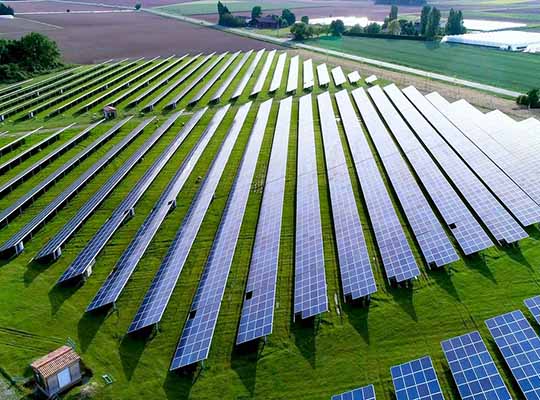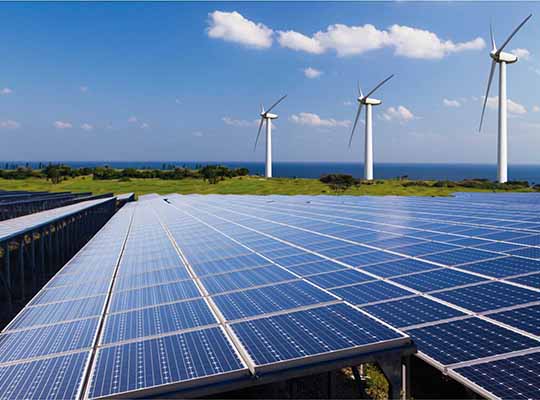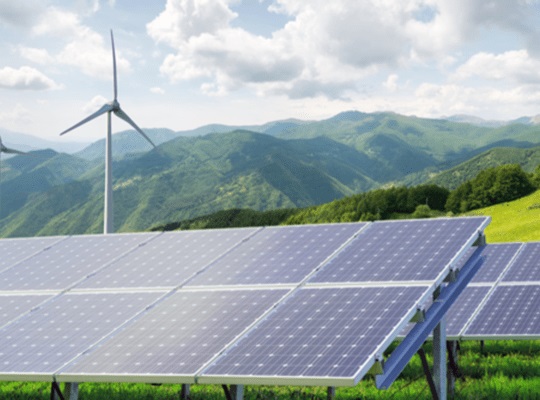Photovoltaics (PV) are vitally known for its process of converting light (photons) to electricity (voltage). In 2019, most of the PV markets did not experience abrupt or unannounced retroactive measures and the situation has therefore improved compared to previous years. This effect and process is also known as photovoltaic effect. In 2019, solar PV stood for approximately 59% of the total renewable electricity production from new production assets. The difference with the figure above is due to the different Capacity factors of renewable technologies. Whereas biomass installations can virtually produce all day and all year-round, wind and solar installations output strongly depend on the available resources that can vary locally. First explored in 1954 by scientists at Bell Laboratories, working solar cell was nurtured from silicon that generated an electric current when exposed to sunlight.
Space satellites and smaller devices such as calculators and watches were early adopters of solar power. Today, electricity from solar cells has become cost competitive in many regions and photovoltaic systems are being deployed at large scales to help power the electric grid. In 2019, the PV market broke the 100 GW threshold for the third time in a row and the market grew 12% YoY. This growth follows a year of stabilization and is explained by the significant market increase in all continents, which global effect has been partially hidden by the slowdown in China, the world market leader in PV installations. Indeed, for some years, the level of market development in China has been driving the global PV market to a large extent. With around 30,1 GW installed in China in 2019, compared to 43,4 GW in 2018 and 53,0 GW in 2017, the global PV market increased to 114,9 GW compared to 102,2 GW in 2018 and 103,4 GW in 2017. Behind China, the European Union ranked second with around 16,0 GW of annual installations in 2019. The USA follow with an increased market at 13,3 GW, followed by India that contracted slightly at 9,9 GW. Japan closes the top five with an estimated 7 GW, a stable level compared to 2018. However, retroactive measures in recent years considerably decreased investor’s confidence in the PV market and still have an impact on the level of installations, even when the market conditions are favourable. The most important changes took place in Spain; despite that the infamous Solar Tax was abandoned last year, the imposed retroactive measures to PV system owners will stay in place.
APAC – The Major Leader
Asia-Pacific is expected to dominate the photovoltaic market due to the presence of various key players and vendors in the region. China is dominating the photovoltaic market in both the use and manufacturing with a market share of more than 35% in the global photovoltaic market. Additionally, the government of India is taking initiatives by providing subsidy to the factories and manufacturing facilities using solar panels for power generation. In the Asia-Pacific region, several research and development activities are taking place to increase the power generation capacity. The government and key players are investing in the region to increase the power generation without increasing the carbon footprint that leads to the market growth. North America is expected to be the second-largest region due to presence of various industries and key players in the region along with various initiatives taken by the government. Europe is considered to grow at a moderate rate due to low investment activity by the European Union in the region for solar energy.
Research Ahead for Solar Cell
Solar cell researchers at NREL and elsewhere are also pursuing many new photovoltaic technologies—such as solar cells made from organic materials, quantum dots, and hybrid organic-inorganic materials (also known as perovskites). These next-generation technologies may offer lower costs, greater ease of manufacture, or other benefits. Further research will see if these promises can be realized.
Lately, the PERC concept (“passivated emitter and rear contacts”) has received increased attention as a promising way to achieve higher solar cell efficiencies. PERC addresses the losses caused by the rear-side contacts through a dielectric passivation layer on the rear.The full-area contact previously used is reduced to points or lines where the coating is removed locally before metallization. It is expected that PERC will gain a significant market share in the coming years, mostly at the expense of BSF technology.
Falling Cost of c-Si
The continually falling cost of c-Si has made it incredibly difficult for other technologies to compete. This is despite the fact that, theoretically, silicon is not particularly well suited for photovoltaic uses because it is an indirect bandgap semi-conductor and has a low absorption coefficient. One such promising technology that suffered from competition with c-Si is copper indium gallium selenide (CIGS). Although exhibiting promise to ultimately be more cost competitive than c-Si, it was driven to near extinction due to its lesser technological maturity and yet-unproven cost advantage. As we frame it in this article, CIGS fell prey to one of the two lab-to-fab “valleys of death” (in which funding is not sustained at a sufficient level to bring the technology to commercial fruition) on the precipitous road to the consumer.
Future of Green Technologies
Several other future technologies are soon the be launched on the market– based on concepts that, like PERC, go back in time 20 years. Heterojunction (HJ) solar cells and interdigitated back contact (IBC) cells have already been mass-produced at some “pioneer” companies for years. Now, with dropping cell prices and lower margins, these old and at the same time new designs are again becoming the focus of the entire industry. These three technology generations – BSF, PERC and the upcoming HJ and IBC cells. LIVING ARCHITECTURE
Our roads, skies and seas can all benefit from clean, renewable technology, but the buildings we erect and inhabit are also ripe for radical makeovers. Rachel Armstrong, professor of Experimental Architecture at Newcastle University, is interested in ‘living’ architecture: that is, biologically powered, eco-responsible solutions to powering and regulating our homes and cities. Rachel cites innovations such as bio-concretes – traditional concrete mixes that are modified and impregnated with infrastructure-prolonging microbial spores – and clever building cladding materials such as ecoLogic Studio’s ’little green cows’: units of algae that, with the right application, can produce fuel, provide shading and sink carbon. Then there are cutting edge building blocks such as Suzanne Lambert’s bio-bricks; while traditional brick production causes huge CO2 emissions, bio-bricks are made from human urine, loose sand and living bacteria – a low-cost, low-emissions alternative.












